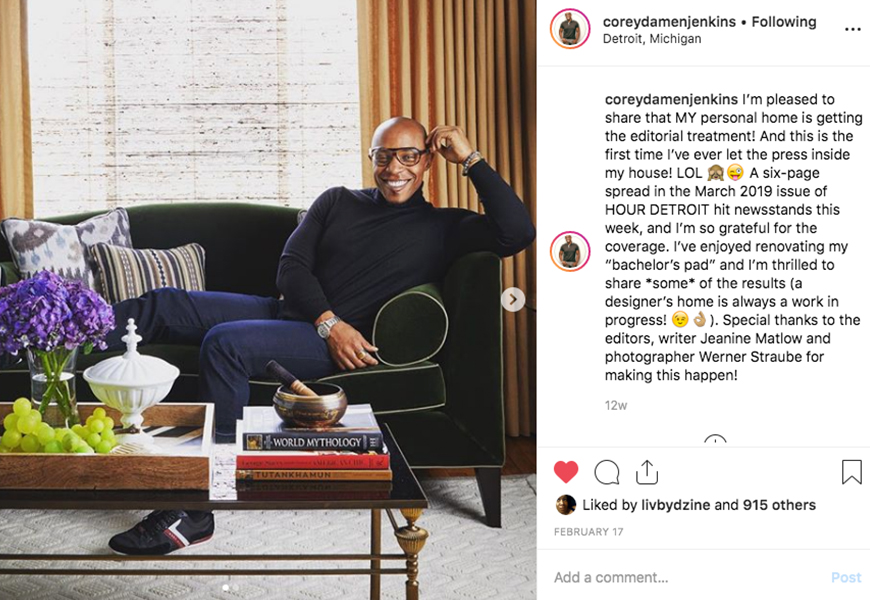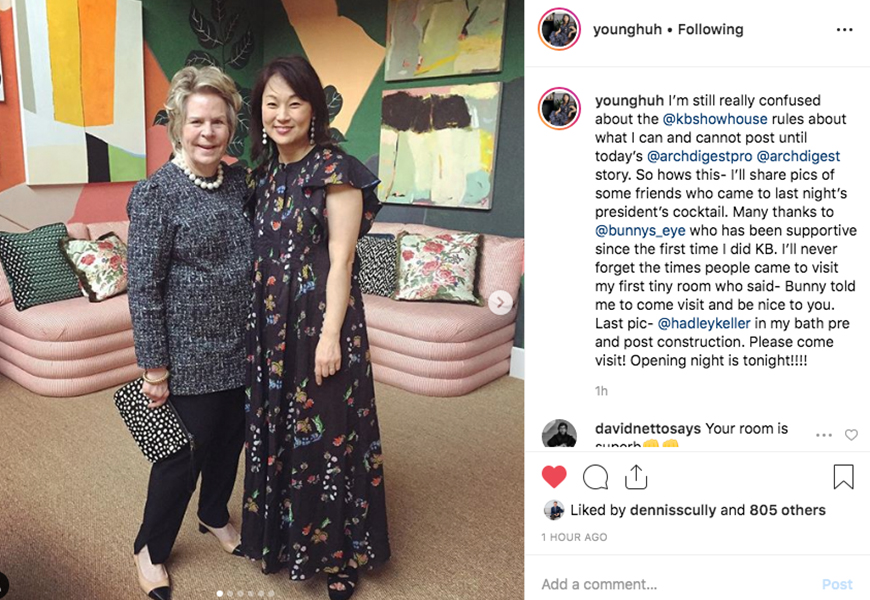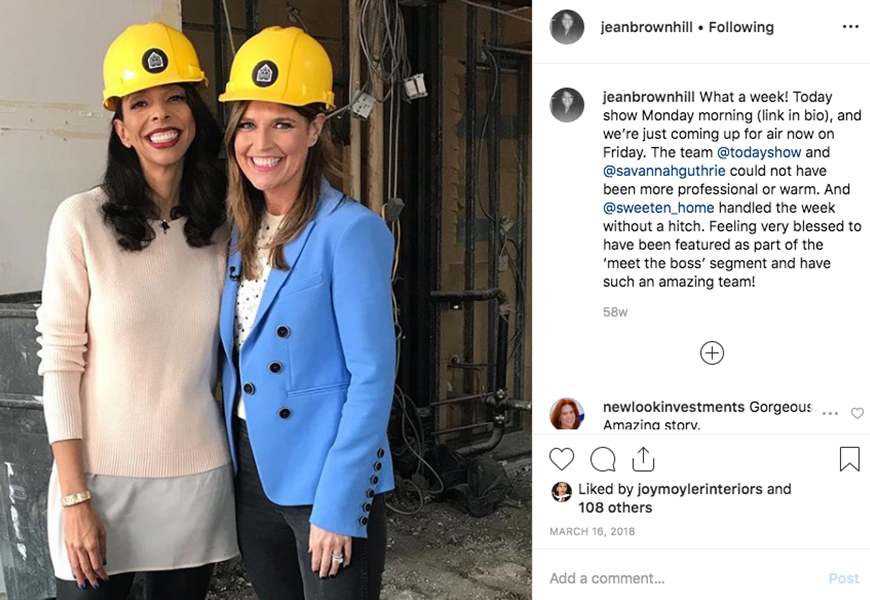“If You Can See It, You Can Be It”, a sentiment stemming from the idea that what we see cultivated in our worlds and at the heads of our industries can determine how we exist in it or see ourselves fit. But what we don’t discuss enough is how we participate in changing the tide as dreamers, onlookers, and leaders of these spaces. We all play a part in what is cultivated, accepted, embraced, and celebrated every day.
The D&D Building is inviting a conversation at Spring Market – that doesn’t stop here- about inclusivity and accountability when it comes to diversity and representation in design. Hosted by Metropolis Magazine and moderated by Metropolis Editor in Chief Avi Rajagopal at Knoll Inc. presented by Knoll Luxe, Interior Designers Corey Damen Jenkins, Young Huh, Everick Brown and Sweeten CEO Jean Brownhill are coming together for a dialogue we can all benefit from.
The panelists, who are all the founders and leaders of their own brands, have shared bits of their own achievements and adversities. What you’ll hear from one talent is similar to the next; most of them dreamt (and worked tirelessly) to turn their visions of success into reality.
For years, Interior designer Corey Damen Jenkins manifested his own dreams.
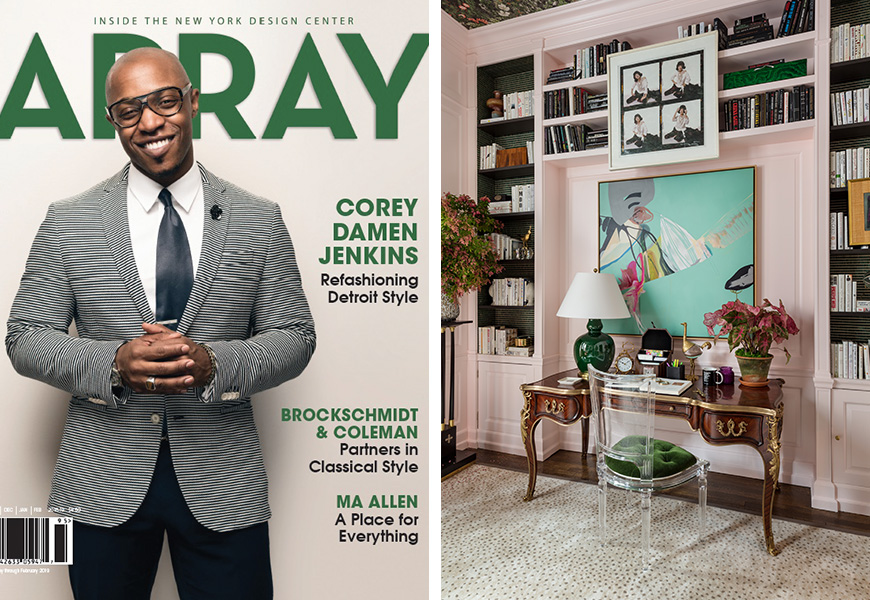
(From left) Corey Damen Jenkins on the cover of Array Magazine, Jenkin’s 2019 Kips Bay Decorator Show House space
“Being a man of color, I remember stealing my mom’s Traditional Home magazines and reading them under the covers when I was supposed to be asleep. I did not see one man of color. You didn’t see black designers in those pages. I wanted to join the fray of the designers but there wasn’t an example set for me,” said Jenkins.
Jenkins set his own example by knocking on every door in every neighborhood in Detroit, Michigan. “I told myself once I got to 800 doors. I would hang up and I would go work at Starbucks.” On the 779th door, Jenkins met his first clients.
“Sometimes you can’t see it. You have to believe it. You have to create your own reality. Sometimes we are more passive and take what life gives to us, but we have the ability to manipulate the energies around us to create our own future and our own present,” Jenkins said. “A lot of things are in our control.”
Also a Detroit native, Interior Designer Young Huh didn’t have particular role models in the industry that she could identify with, until she saw designer Sheila Bridges gracing the cover of Elle Décor.
(Above) Young Huh standing in her 2019 Kips Bay Decorator Show House space with Bunny Williams
“I didn’t have any Asian role models to look up to or to emulate. My parents said no one would ever hire a Korean designer and the fear stuck in my head. But I remember seeing Sheila Bridges on the cover of Elle Decor and I was just overwhelmed by the beauty of her work. I thought wow- there’s a woman of color on the cover of a magazine. It IS possible for a woman of color to be a designer,” said Huh. “Today Sheila is one of my dearest friends, and I always tell her that seeing her from afar gave me the courage to go for it.”
Huh’s work has since been published in Elle Decor, Domino, House Beautiful, Traditional Home, Vogue, Domino, and more.
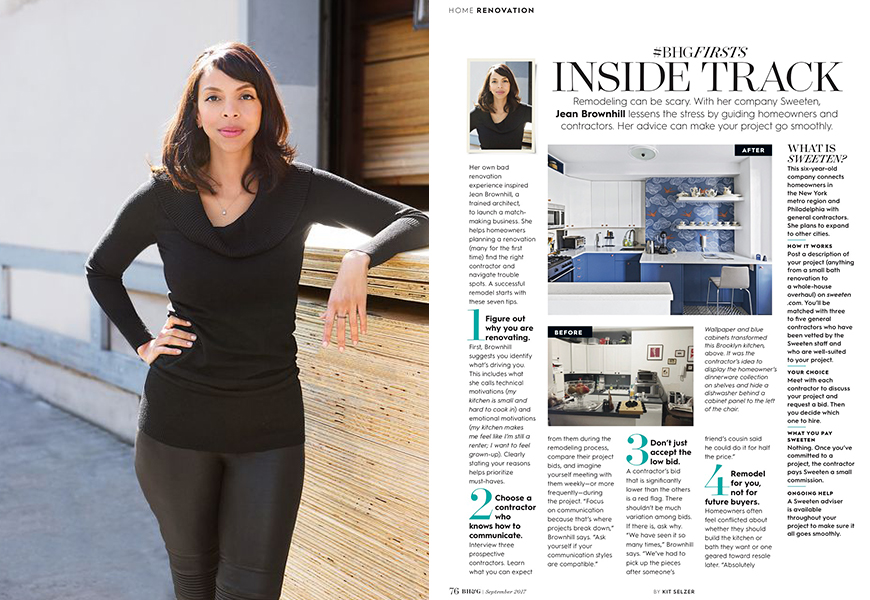
(From Left) Jean Brownhill, Brownhill featured in Better Homes and Gardens “Stylemaker” issue
Jean Brownhill is another “example who set the example”. Brownhill is the Founder and CEO of Sweeten, the free platform that connects clients and designers to vetted contractors for their dream renovation. Brownhill, a trained architect, seemingly has always been ambitious, and sure as heck doesn’t have a quitting attitude.
In 2018, Brownhill participated in a Black Women Talk Tech conversation with author, speaker and strategist Charreah Jackson. The two discussed women in the tech space, the struggles of launching a business–and a successful one for that matter–and how being a woman of color inherently made her experience different than others around her. Brownhill uses a baseball metaphor to describe her experience.
“One of the main transformational moments for me [occurred during] my fundraising [for Sweeten]. Most of the investors you’re pitching, they were born on 3rd base. And I’m also on 3rd base, but I was born in the parking lot of the next facility. So, when we were both standing there, they thought that that’s a long distance to run to get to home plate. I’m like, you’re crazy, that’s the shortest distance I’ve ever had. It really took this moment of appreciating this moment. We’re both here but it took me a little bit more to get here. And I am definitely not afraid to get to home plate,” Brownhill said.
Known for his “resimmercial” expertise (residential and commercial design combined), Everick Brown of Everick Brown Design didn’t always intend to be an interior designer. Raised in the Wilshire District, LA, by an entrepreneurial mother, the Dartmouth graduate spent time traveling the world for his work in fashion. It was on those travels that he developed his love for textiles, colors and interior design. That direction created his untraditional path to design as he began working with clients, first on accessorizing their living and commercial spaces, and developed that work into the full-service design firm he operates today.

(From left) Everick Brown, Brown feat. in Essence Magazine
Of his approach, Brown says “I design spaces that are as functional as they are elegant and sophisticated. I enjoy working with a range of clientele, from those with highly discerning tastes, to those who are newer to the process of working with designers. But always with the intent of helping the client see their vision realized.”
Brown extends his design sensibility and reach through his art and accessories brand Objects and Accents. The platform is a resource for interior designers and homeowners to source finishing touches for their projects through a one-stop shopping curation of globally and locally made products. Objects and Accents is currently available in showrooms in LA, as well as in the Design Building at 200 Lexington at Cliff Young. In addition, a new outpost will open this summer in Martha’s Vineyard.

(Above) Nō Studios, a collaborative workspace for creatives. Nō Studios was designed by Everick Brown and founded by screenwriter and director, John Ridley.
Young Huh shares what it was like to first pursue Interior design and how her parents grappled with the idea that was once foreign to them. Young, among the others on the panel, would tell you to give the path that calls you a shot, even if it’s not a clear one.
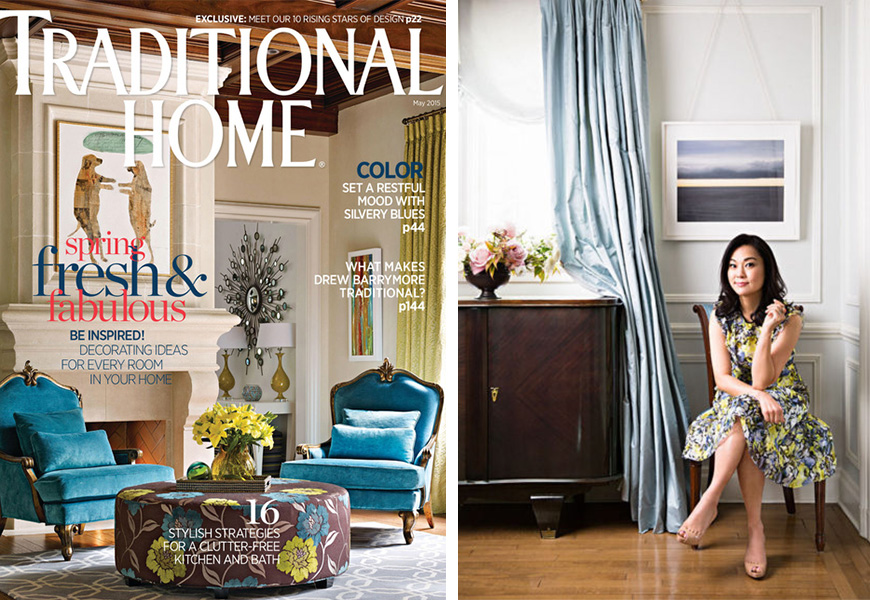
(From left) Huh’s interiors on the cover of Traditional Home, Young Huh
“The dearth of diversity in Interior Design reflects a number of factors. But I think one is the socio-economic barrier to a design education as well as knowledge and access to the world of design. As immigrants, my parents and I couldn’t imagine that interior design could be a viable livelihood. Having left war torn and newly industrializing South Korea for a better life in the US, my parents wanted me to be a doctor or a lawyer so I went to law school. It took many years of struggle and self-analysis to realize that I really wanted to do something creative. Now that my parents see that I am actually flourishing as an interior designer, their ideas of what success can look like have very much changed as have mine. Though when my mother shows people my magazine stories, she still says- Look! It’s our daughter, the lawyer.”
Because of these designers courage to never quit, they’ve not only carved their own success, but also have now created a remarkable ripple effect; they are now the examples that they didn’t have growing up. They are the examples of the next generation. If You Can See It, You Can Be It.
Register here for Spring Market here.
*Cover image is Young Huh’s 2019 Kips Bay Decorator Show House Design

